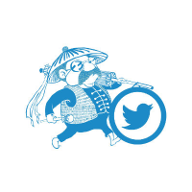









27 April 2019 by Roy Preece

Our good friend and colleague, Ella (who makes great New Year dumplings too!) was surprised to find what seemed to be an English coin in a famous Art Gallery in Taiwan https://limeishu.org.tw/ So, she sent this picture to Su Yen.
Su Yen and Ella wondered about the design. On one side was the crowned head of the present Queen of England, Elizabeth II, while on the other side was a very Chinese-looking three-toed dragon with deer’s antlers. https://en.numista.com/catalogue/pieces21075.html Was this just a medal or a ‘real’ coin and, if a coin, how did it come to have a Chinese dragon on it? By real, I suppose they mean was it genuine and could you spend it?
The answer, as so often, is yes and no. The coin is marked ISLE OF MAN. The Isle of Man is a small island in the sea between Ireland and England, with a population of 85,000 people. It is called a Crown Dependency, which means that it is self-governing internally, but its foreign policy and defence is managed by England, and the English Queen is their queen too. But the island has its own parliament, called the Tynwald, its own postal system -- and makes its own coins.
Why, then, the Chinese dragon? Like many small states, the Isle of Man uses its ability to make its own coins to produce unique commemorative issues, based on special occasions and mainly for sale at a profit to coin collectors; someone thought that the Year of Dragon was a special event, and this certainly is a handsome coin and would be nice to own. To make it clear the coin is marked YEAR OF THE DRAGON.
But can you spend it? Firstly, Isle of Man (Manx) money cannot be spent in the United Kingdom, though UK money can be spent on the island. But, secondly, crown coins, marked 1 CROWN, are never spent these days, though in the past they were – the first English crown coin was made in 22-carat gold in 1526 under King Henry VIII. Crown coins are still produced in the UK as well, but only for rare national events. Nominally they were worth five shillings in old money, or 0.25 of a GBP, but in 1990 the government decided to make them worth 5 GBP -- confusingly this applies only to post-1990 crowns!
Crowns are legal government coins, but very few people or places will accept them as payment, though Post Offices will exchange them at nominal value. Usually, it would be very foolish to spend them as money because their collectors’ value is more -- often much more -- than their purchasing value. Historic crowns made of gold or pure silver are very valuable, but the British commemorative crown coins, made of copper-nickel alloy, produced in the last 50 years were made in large numbers and are mostly worth only a few pounds, though the Manx crowns, made of sterling silver, are more valuable.
Here, for example, is the beautifully detailed classical design of St George slaying the dragon on the 1951 Festival of Britain commemorative crown, though the design dates from 1819 and has been used on many British coins. A perfect miniature work of art: the coin is only 3.8cm.wide. These coins show how Western and Eastern attitudes to dragons are traditionally quite different. In the Far East, they are gods; in the West, they usually are evil beings to be killed if possible.
The dragon design for the Manx coin was in fact made originally by a famous Taiwanese painter, designer and politician, Li Mei-Shu https://en.wikipedia.org/wiki/Li_Mei-shu Mei-Shu’s work can also be seen in the famous Temple of Master Chen.
There must be an interesting story to be found here. When the officials on the Isle of Man decided to commemorate the Year of the Dragon, how was it they decided to find an authentic design from the other side of the world and how was the contact made with the Mei-Shu gallery? Does anyone know? We’d love to hear about it.